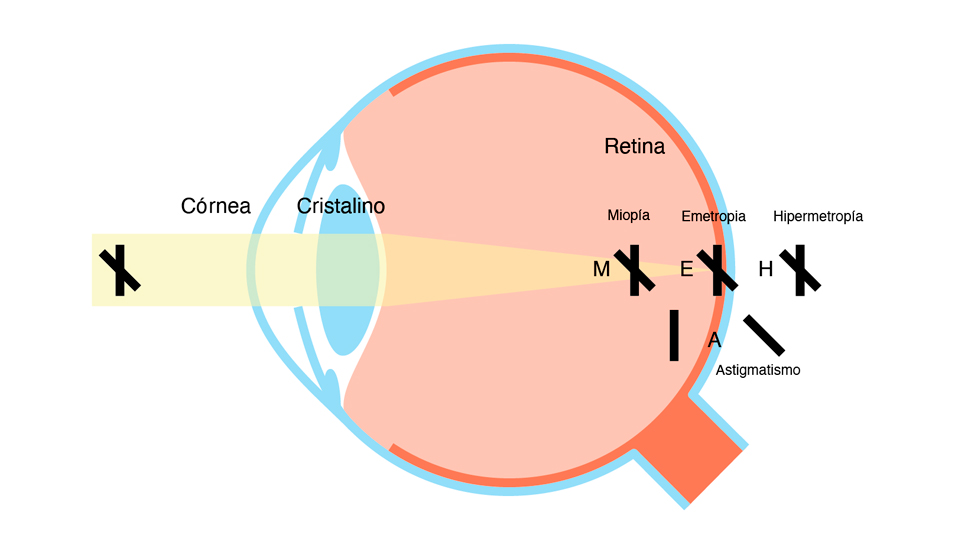Benefits of strength training
22/04/2025

31/03/2025
An eye that achieves optimal vision without any correction is known as emmetropic. From there, we identify eyes that require added optical power to see clearly, such as hypermetropic eyes, or reduced power, as in the case of myopic eyes. Both types may also present with astigmatism, which occurs when the surface of the eye is not a perfect sphere and has varying curvatures or optical powers depending on the axis being measured. In such cases, the prescription always begins with an axis measured in degrees, followed by the power in dioptres, which indicates the level of astigmatism. After that comes the myopia or hypermetropia, depending on the patient.
The eye works like a camera or a cinema projector. The image is captured by our lens system — made up of the cornea and crystalline lens — and that image must be focused on the retina, which acts like photographic film or a cinema screen. In myopic (M) eyes, the image forms in front of the retina. In hypermetropic (H) eyes, it forms behind it. Astigmatic (A) eyes form two focal points, one in front of the retina and one behind.
A myopic eye is typically larger, which is why the image forms before the retina. These prescriptions tend to increase over time due to the growth of the eye.
A hypermetropic eye is the opposite — a smaller eye that did not grow as expected, causing the image to form beyond the retina.
When prescribing lenses, we use either positive or negative lenses to adjust the image position so it falls directly on the retina, as in emmetropic (E) eyes. In astigmatic cases, lenses with different powers are used for each affected axis, so the two initially separated images are brought together and focused on the retina.
Raúl Angulo, Optometry Department, Barraquer Ophthalmology Centre
Almost all wearers of glasses and contact lenses consider reducing their prescription with refractive techniques at some point. In this chapter we explain all the options and help you know when it is worth having surgery, who is a good candidate and why it is so important to choose where to go.